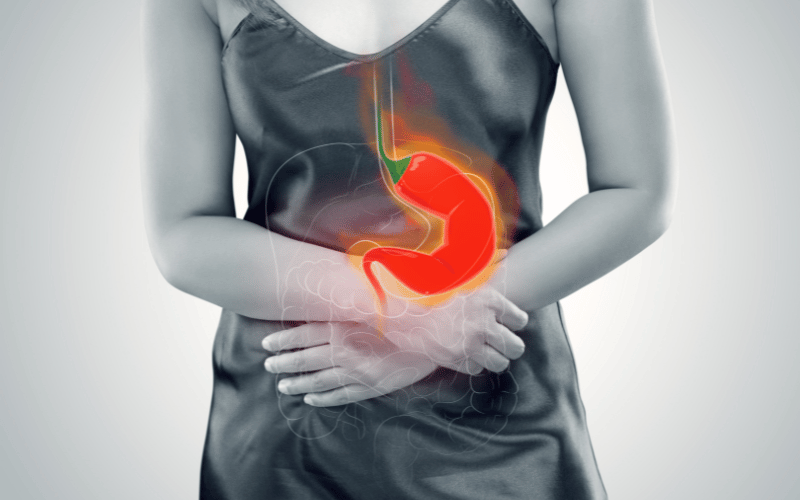Symptom 8: Acid Reflux and Heartburn

When stomach acid makes an unwelcome journey upwards into the esophagus, the result is a burning sensation commonly known as heartburn or acid reflux. In the context of Small Intestinal Bacterial Overgrowth, this symptom takes on an added layer of complexity. The overgrowth of bacteria in the small intestine leads to an excessive production of gases. These gases, mainly hydrogen and methane, can increase the intra-abdominal pressure, pushing the lower esophageal sphincter (LES) to open inappropriately. When this happens, stomach acid escapes into the esophagus, causing that all-too-familiar burn. But it’s not just about the immediate discomfort. This reflux, if chronic, can erode the esophageal lining, leading to more severe conditions like esophagitis or Barrett’s esophagus.
Acid reflux isn’t an occasional irritant. For many with SIBO, it’s a recurring nightmare. Think about the challenges of navigating meal times, constantly fearing that certain foods might trigger an episode. Spicy dishes, caffeine, certain dairy products—all potentially off the table. Social occasions become a minefield, with sufferers often having to either restrict their food intake or risk an episode in public. The daily juggle of antacids, dietary restrictions, and timing meals to avoid nighttime reflux becomes an exhausting routine, taking a significant toll on quality of life.
While acid reflux might seem like a standalone issue, it’s deeply intertwined with other SIBO symptoms. For instance, bloating, a hallmark of SIBO, can exacerbate intra-abdominal pressure, making reflux episodes more likely. Similarly, the nausea experienced by many SIBO patients can be intensified during a heartburn episode. Recognizing these connections is essential, as it underscores the need for holistic treatments that address the root causes rather than just symptom relief.(8)